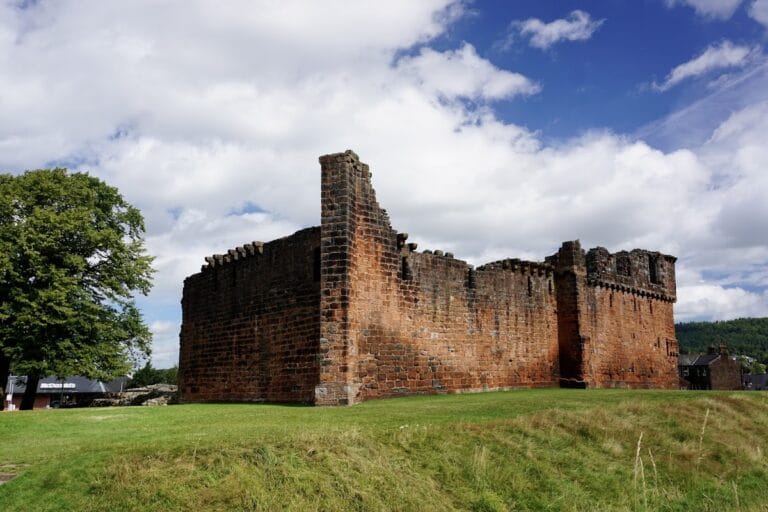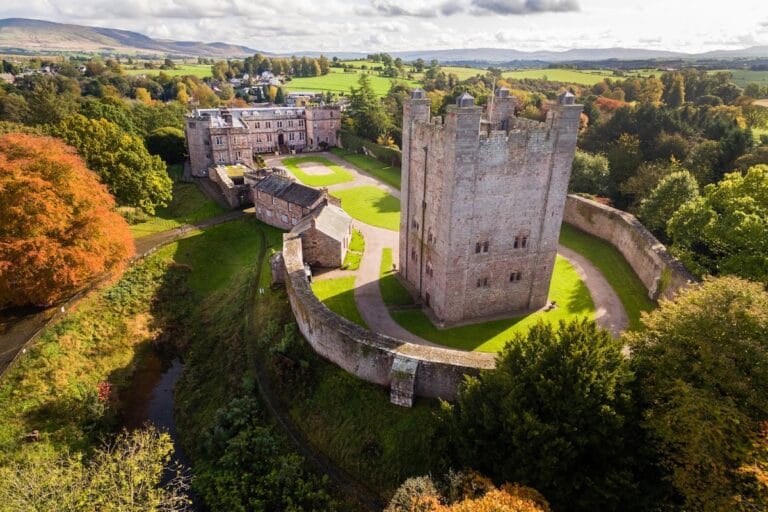Lowther Castle: A Historic English Estate with Rich Heritage
Visitor Information
Google Rating: 4.6
Popularity: Medium
Google Maps: View on Google Maps
Official Website: www.lowthercastle.org
Country: United Kingdom
Civilization: Unclassified
Remains: Military
History
Lowther Castle stands in the village of Lowther, England, and was established by the medieval Lowther family. Its origins trace back to around 1120, when Dolfin de Lowther, a nobleman descended from Viking settlers during the era of the Danelaw, founded the first known settlement on this site.
In the 17th century, the Lowther family replaced the original structure with Lowther Hall, completed in 1685 for John Lowther, the 1st Viscount Lonsdale. This house served as the family residence and a social focal point for the area. Over time, the estate attracted notable visitors, including Mary, Queen of Scots in 1568, the Romantic poets William Wordsworth and Robert Southey, and the landscape artist J. M. W. Turner, reflecting its cultural importance.
Between 1806 and 1814, William Lowther, the 1st Earl of Lonsdale, commissioned a new castle on the site. Designed by Robert Smirke, this project marked the architect’s first major commission. The castle embodied the family’s status and was the centerpiece of their estate until financial troubles emerged under Hugh Lowther, the 5th Earl, who inherited in 1882. His lavish lifestyle contributed to the estate’s decline and led to his departure from the castle in 1935.
During the Second World War, the castle grounds were repurposed by the military for tank training, specifically for developing the Canal Defence Light, a secretive armored vehicle illumination device. After the war, in 1947, the castle’s contents were sold, and to avoid property taxes, its roof was removed in 1957. This left the building largely a shell, exposing it to decay. Subsequently, parts of the estate were converted to agricultural uses including timber production and livestock farming, reflecting a shift from noble residence to practical utility.
Beginning in the 21st century, concerted efforts have been made to conserve the property. A 2005 partnership launched a restoration program focused on stabilizing the castle remains and reviving the surrounding gardens. These efforts led to the site’s reopening to the public in 2011 and ongoing care overseen by the Lowther Castle and Gardens Trust, which continues to develop the historic landscape.
Remains
Lowther Castle presents as an impressive example of a sham castle, a style designed to imitate medieval fortifications without their defensive purpose. Its layout includes a central nine-bay block adorned with embattled walls and angle turrets. A prominent, taller central tower rises from this core, connected by lower wings to corner pavilions. The facade incorporates sections salvaged from the earlier 1685 Lowther Hall, blending architectural elements across centuries.
The castle’s entrance features a porte-cochère, a covered vehicle port allowing carriages or cars to pass through while sheltered. The window designs are a blend of Gothic pointed arches and Tudor-style flat-topped frames, creating a varied yet harmonious architectural vocabulary. To the east of the main building lies a dedicated service wing, supporting the household functions.
Enclosing a large forecourt, a battlemented wall includes several turrets and a gatehouse, enhancing the impression of a fortified manor despite the castle’s largely residential role. After the roof was removed in 1957, much of the interior was demolished or deteriorated, leaving the facade and outer walls as the main surviving structure.
The gardens were historically extensive and richly designed. They included a Rock Garden and the Sweet Scented Garden, which featured oval flower beds filled with aromatic plants. This garden contained small ponds with miniature waterfalls and rustic seating, alongside a French vase gifted by the German Kaiser inscribed with verses by Omar Khayyam, a famous Persian poet.
A notable feature, the Japanese Garden, was created in 1904 and included imported trees, ornamental bridges painted scarlet, pools with Japanese water lilies and irises, life-size bronze animal sculptures, shrines, and carefully maintained dwarf trees. Its design incorporated hidden pathways and tiny islands, creating a tranquil, contemplative space within the estate.
The Terrace, stretching approximately 1.6 kilometers, was landscaped with grass and bordered by various trees and shrubs. It offers sweeping views over the River Lowther and surrounding hills. Hugh’s Garden, designed before the First World War and inspired by Versailles, arranged six wide grass avenues radiating from a central point, separated by clipped yew hedges and dotted with Italian stone fountains amid thousands of ground cover plants.
The Rose Garden stood out for its vast collection of around 25,000 rose bushes organized on a green lawn centered by a fountain and rock feature. Adjacent to this was the Iris Garden, enclosed with clipped hedges and featuring lily ponds and stone seating, contributing to the estate’s diverse botanical appeal.
The estate’s use during World War II as a tank training range caused damage to both the castle grounds and gardens. In the later decades of the 20th century, sections of the forecourt were turned into pig pens, and parts of the estate became the site of a chicken-broiler factory and a timber plantation, reflecting a period of industrial and agricultural repurposing.
Recent restoration work has stabilized the castle ruins and focused heavily on the gardens’ regeneration. This includes the repair and conversion of stables and replanting with species such as Hydrangea aspera Sargentiana and Parthenocissus henryana, along with thousands of roses and other perennials. The site now features amenities such as a large wooden playground constructed from sustainably sourced timber, complementing ongoing efforts to revive the historical landscape.










